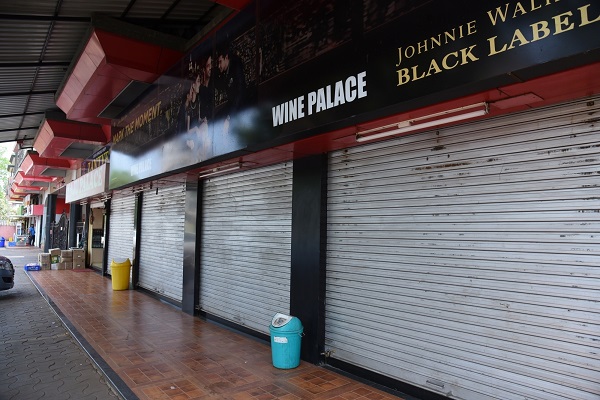Panaji, (Samajweekly) Even as the Union Ministry of Home Affairs in its fresh list of guidelines for orange and green zones, has allowed opening of liquor stores, alcohol retailers in Goa are anxious about a steep drop in sales as well as sceptical about availability of raw alcohol, for manufacture of various liquors and alcoholic drinks.
According to Dattaprasad Naik, president of the Goa Liquor Traders Association, sales may drop by as much as 70 per cent, due to the absence of tourism to begin with, as soon as liquor stores in the state open.
“Because of the absence of tourists, liquor stores, when they re-open, are expected to witness a 70 per cent drop in sales,” Naik told IANS.
Last near more than seven million tourists visited Goa, which is around more than four times the state’s resident population of 1.5 million.
Naik also said, that he anticipated a drop in the supply of raw alcohol, a key ingredient for manufacturing alcohol. Goa does not produce alcohol and most of it is imported from Uttar Pradesh and Maharashtra.
“If import of alcohol from these states is not available in adequate quantities, then the capacity of the distilleries in Goa to manufacture alcohol also reduces,” Naik said.
Welcoming the MHA’s relaxation of norms, which allows opening of liquor stores with strict social distancing norms, Naik said, that it was the first step towards normalising the liquor trade in the state. Both the districts in Goa have been declared as green zones by the central goverment. The state does not have a single active COVID-19 case.
“While the MHA guidelines have been announced, we are waiting for the state government to formally issue us directions to open our stores,” Naik said.
One of the most popular tourism destinations in the country, Goa is well known for its liberal liquor regime, where alcohol is taxed less as compared to other states, especially its neighbours Karnataka and Maharashtra. There are more than 10,000 liquor retailers in the state, where the liquor industry contributes more than Rs 400 crore annually towards the state exchequer in form of taxes.










